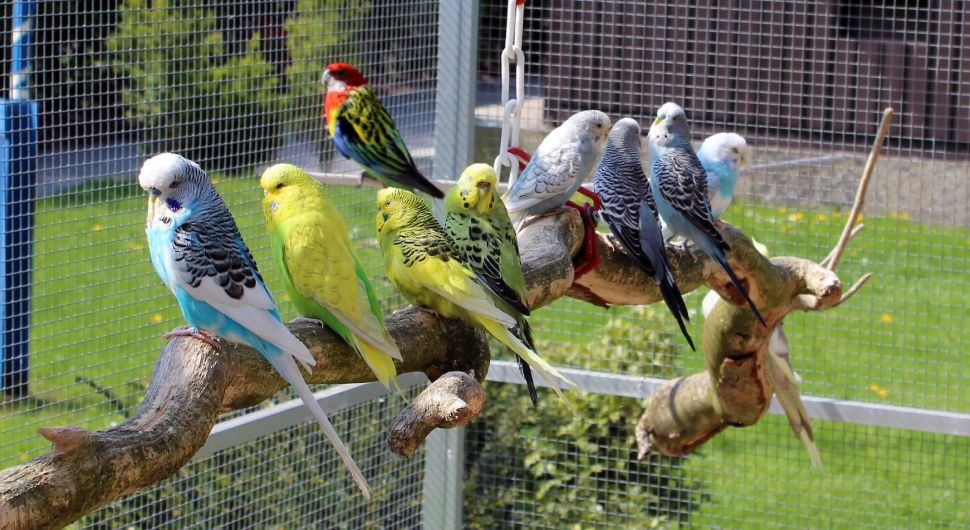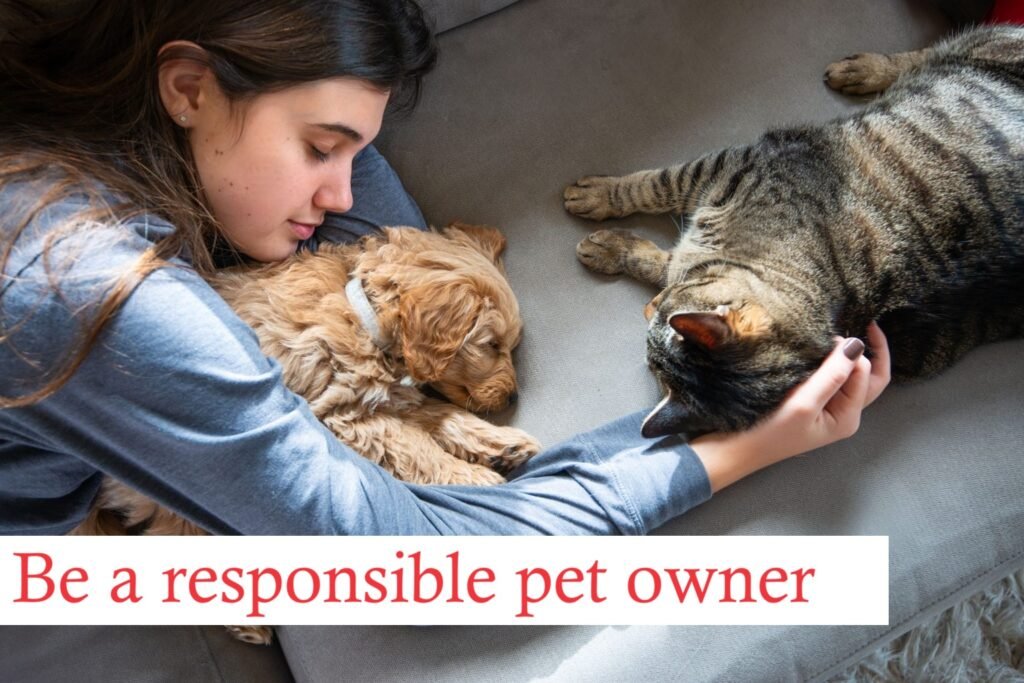Many bird owners like the idea of letting their pet birds live outside, imagining a life filled with fresh air, natural sunlight, and more space for their feathered friends. But the question remains: Can pet birds be kept outside safely? In this guide, we’ll explore the benefits, risks, and key factors to consider before making this decision. We’ll also cover real-life examples, expert advice, and practical tips for creating a safe and enjoyable outdoor environment for your pet bird.
Why Consider Keeping Pet Birds Outdoors?
Some bird owners believe that keeping birds outside offers several benefits. Birds can enjoy natural light, fresh air, and a more enriching environment. Outdoor aviaries can also give them more space to fly, which is important for their physical and mental health.
However, the question is not just can pet birds live outside, but also, “Should they?” While outdoor living can be rewarding for some species, it also presents several challenges. Let’s break down which birds are better suited for outdoor life and what you need to consider.
Birds That Can Live Outdoors
Not all bird species are suited for living outside. Birds from tropical regions or those that have been bred indoors for generations might struggle to adapt to outdoor conditions. Here’s a table showing how well different species can adapt to life outdoors:
| Bird Species | Outdoor Adaptability | Important Considerations |
| Budgies | Moderate | Needs warmth, not suitable for extreme cold |
| Cockatiels | High | Enjoys mild climates, needs shade and protection |
| African Grey Parrots | Low | Sensitive to cold, better suited to indoor environments |
| Conures | Moderate | Thrives with space, needs secure and predator-proof areas |
| Finches | High | Adaptable, enjoys flying outdoors, needs shelter |
| Lovebirds | Moderate | Enjoys mild climates, sensitive to extreme temperatures |
For example, finches and cockatiels are more adaptable to outdoor environments. These birds can enjoy outdoor aviaries with the right care and protection. However, birds like African Grey Parrots, which are sensitive to cold, might struggle and are better kept indoors.
What Are the Ideal Conditions for Keeping Pet Birds Outside?
1. Temperature and Climate Control
Birds are very sensitive to changes in temperature. They do best in a moderate climate. In fact, the American Bird Conservancy recommends keeping birds in temperatures between 65°F and 80°F. Birds that are exposed to cold weather, especially temperatures below 50°F, can suffer from cold stress and may even develop hypothermia.
“Always ensure your bird has a temperature-controlled environment if kept outdoors. Extremes in weather can be dangerous.” – Dr. Amy Foster, Avian Specialist
In hot weather, birds are also at risk. Heatstroke can occur if they are kept in temperatures above 85°F without access to shade or water. In these conditions, birds will begin to pant, hold their wings away from their body, and show signs of distress.
Tip:
If you live in an area with extreme weather conditions, it’s better to keep your birds inside during very hot or cold months. You can use outdoor aviaries during the spring and fall when temperatures are mild.
2. Shelter and Protection from Predators
When keeping your pet birds outside, providing shelter and protection from predators is essential. Outdoor birds need a well-constructed aviary that is predator-proof. This means using strong mesh or wiring to prevent attacks from cats, raccoons, or even larger birds like hawks.
“Birds kept outside are at much higher risk of predator attacks. It’s crucial that the aviary is secure and placed in a location that provides some cover from predators.” – Dr. Amy Foster, Avian Specialist
Tip:
Always check your aviary for any holes or weak spots that a predator could use to access your birds. Secure locks on the aviary doors are also essential to ensure their safety.
3. Ventilation and Shade
Birds need fresh air, but they also require protection from direct sunlight. Too much heat or exposure to sunlight can cause them to overheat. It’s important to create an environment that offers plenty of shade, especially during the warmer months.
Tip:
Good ventilation is also necessary to keep the air fresh and reduce the risk of respiratory infections. Make sure the aviary is positioned in an area with a light breeze, but avoid placing it in areas prone to strong winds.
Common Risks of Keeping Pet Birds Outdoors
While there are benefits to keeping pet birds outdoors, there are also some risks that you should be aware of.
1. Predator Attacks
One of the biggest dangers for outdoor birds is predator attacks. Even in urban areas, birds are vulnerable to attacks from cats, raccoons, and hawks. A well-built aviary is essential to protect your birds from these threats.
“Predators are a serious threat to pet birds kept outdoors. A secure aviary is their best line of defense.” – Dr. Lisa Blanchette, Avian Veterinarian
Tip:
Make sure the aviary is made with strong mesh wire and is securely locked at all times. Avoid placing the aviary in remote or poorly lit areas where predators might lurk.
2. Weather Hazards
Sudden weather changes can be dangerous for outdoor birds. Birds left outside during storms, heavy rain, or strong winds can suffer from stress or injury. In some cases, birds can be caught in extreme weather, leading to hypothermia or heatstroke.
Tip:
If extreme weather is forecasted, it’s best to bring your birds indoors until conditions improve.
3. Exposure to Diseases
Birds kept outside may come into contact with wild birds, which can carry diseases like avian flu or psittacosis. Regular vet check-ups and vaccinations are crucial to keep your bird healthy.
Tip:
Keep the aviary clean and disinfect it regularly to reduce the risk of infection.
How to Transition Pet Birds to Outdoor Living
If you want to let your birds live outside, it’s important to transition them slowly. Start by placing their cage outside for short periods, allowing them to adjust to the new environment. Gradually increase their time outside as they get more comfortable.
Real-Life Example: Keeping Cockatiels Outdoors
Cockatiels are a great example of a bird species that can enjoy outdoor life if properly cared for. Cockatiel owners in areas with mild climates, like southern California, often set up outdoor aviaries where their birds can enjoy flying and playing in the fresh air.
“My cockatiels love spending time in their outdoor aviary. I make sure they have plenty of shade and water, and I bring them inside if it gets too hot or cold. They seem much happier and more active when they get to spend time outdoors.” – Jessica, Cockatiel Owner
Practical Tips for Keeping Birds Outside
- Always monitor the temperature in the aviary. Birds should not be exposed to temperatures below 50°F or above 85°F.
- Use a secure lock on the aviary door to prevent predators from getting in.
- Provide plenty of shade and fresh water to help your birds stay cool in hot weather.
- Regularly clean the aviary and keep food and water dishes clean to prevent diseases.
- Make sure the aviary is large enough for your birds to fly and has perches at different heights.
Conclusion:
In summary, can pet birds be kept outside? Yes, but only under the right conditions. Birds need a safe, secure, and comfortable environment that protects them from predators and extreme weather. Not all birds are suited for outdoor living, and it’s important to choose the right species and take precautions to keep them safe.
Outdoor aviaries can provide enrichment and exercise for your birds, but regular monitoring and care are essential to ensure their health and safety. Always consult with a vet before making any major changes to your bird’s living environment, and be prepared to bring them indoors if conditions become unsafe.
FAQs About Keeping Pet Birds Outside
Q: Can birds live outside during the winter?
A: Most birds cannot tolerate freezing temperatures and should be brought inside or kept in a heated aviary during the winter months.
Q: How do I protect my birds from predators?
A: A secure aviary with strong mesh and locks is essential. Regularly check for any weak spots where predators might try to enter.
Q: Are birds more likely to get sick if they live outside?
A: Yes, outdoor birds may come into contact with wild birds that carry diseases. Keeping the aviary clean and ensuring regular vet check-ups can help prevent illness.
Q: How much time should pet birds spend outside each day?
A: If you’re transitioning your birds to outdoor living, start by allowing them to spend short periods outside, such as a couple of hours a day. Gradually increase the time, ensuring they are comfortable and safe. However, monitor for temperature changes and always bring them inside during extreme weather conditions.
Q: Can I leave my pet birds outside overnight?
A: It’s not recommended to leave pet birds outside overnight unless their aviary is highly secure, predator-proof, and insulated against cold temperatures. Birds are more vulnerable to predators and sudden temperature drops during the night, so it’s usually safer to bring them indoors after dark.
Q: What should I do if wild birds frequently visit my pet bird’s outdoor aviary?
A: Wild birds can introduce diseases or parasites to your pet bird, so it’s important to minimize their contact. Try to place the aviary in a location where wild birds are less likely to gather. Using a cover or installing fine mesh around the aviary can help prevent wild birds from coming too close.



